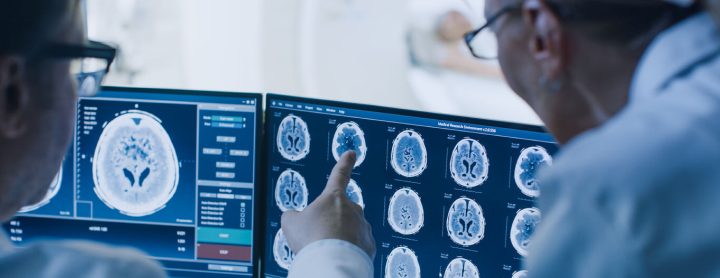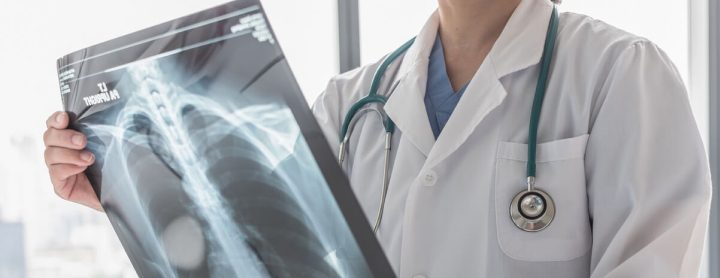Cancer
Cancer is a group of related diseases involving abnormal cell growth, including lung, breast and colorectal cancer. Every type of cancer is caused by changes to DNA. These changes cause some cells to divide uncontrollably and spread into surrounding body tissues.

Cancer is not just one disease, but several diseases. Cancers may start in any part of your body and are usually named for the part where it starts. For example, breast cancer starts in the breasts, lung cancer in the lungs, and skin cancer in the skin.
Cancer can spread from where it started to other parts of the body. This is called metastasis.
Symptoms may vary depending on the type of cancer, and treatment can depend on the type of cancer and how advanced it has become.
Altogether, cancer is the second leading cause of death in the United States, behind heart disease. Cancer claims about 602,350 lives every year, according to the U.S. Centers for Disease Control and Prevention.

What Causes Cancer and How Does It Spread?
Cancer is caused by changes to the genes that control how cells in the body grow and divide.
These can be the result of genetic or hereditary traits. Or environmental exposure to certain items may cause genetic damage leading to some kinds of cancer.
The American Cancer Society lists more than 200 things in the world around you that are known, or probable, causes of cancer. The list ranges from wood dust to gamma radiation.
- Smoking and tobacco product use
- Diet and physical activity
- Sunlight or other radiation
- Viruses and infections
Source: American Cancer Society
Chemical exposure can also increase the risk of developing certain cancers.
How It Forms and Spreads
Cancer interferes with how cells reproduce.
Normally, cells grow, divide and form new cells as the body needs them. Older cells die and are replaced with new ones. But cancer disrupts this process. Old, damaged cells aren’t replaced, but new cells are produced. When new cells are produced uncontrollably, they form masses called tumors.
Tumors may be either malignant or benign.
Malignant tumors are those that invade other tissue near them. They may break off and use the bloodstream to move to other parts of the body where they form new tumors. Benign tumors don’t invade nearby tissues, and they don’t usually grow back when they are removed.
Cancer Cells vs. Normal Cells
Cancer cells differ from normal cells in part because they are less specialized. While normal cells develop to perform very specific functions, cancer cells don’t. This is a main reason cancer cells don’t stop dividing.
Normal cells are programmed to stop dividing and die as part of their normal life cycle — a process called apoptosis. Cancer cells don’t follow this rule, and so they spread.
Cancer cells can escape the immune system, preventing it from detecting a problem with the cancer and defending the body against growing cancers. They can also hijack the immune system to protect cancer cells.
And cancer cells can influence other cells to help tumors grow by creating blood vessels to feed oxygen to tumors.

Drugs that May Increase Your Cancer Risk
Studies have found some commonly prescribed drugs may be associated with an increased cancer risk. Still others have found that more study is needed to rule out potential cancer risks. Although the U.S. Food and Drug Administration has to approve a drug before it’s sold in the United States, some risks are not spotted until after a drug has been on the market for several years.
An example is Actos, which was approved in 1999. By 2007, Actos was the world’s best-selling diabetes drug, earning $3.58 billion a year for Takeda Pharmaceuticals. In 2011, the FDA required Takeda to add a warning to Actos’ label that long-term use could increase the risk of bladder cancer. Actos is still sold in the United States, but India, Germany and France have all ordered it pulled from their markets.
| Condition | Drugs | Possible Cancer Risks |
|---|---|---|
| Asthma | Xolair | Multiple studies point to an increased risk of several cancers compared with non-Xolair users |
| Arthritis | Humira | Lymphomas, leukemia, melanoma; Humira label includes cancer risk warning |
| ED (erectile dysfunction) | Viagra | Melanoma |
| Heartburn | Zantac | Recalled in 2019 after certain lots tested positive for N-nitrosodimethylamine (NDMA), a cancer-causing chemical |
| High blood pressure | Valsartan and certain other high blood pressure medications | Recalled in 2019 after certain lots tested positive for N-nitrosodimethylamine (NDMA), a cancer-causing chemical |
| Low-T (low testosterone) | Testosterone Replacement Therapy (AndroGel, Depo-Testosterone, others) | Prostate cancer |
| Male-pattern hair loss | Propecia | Male breast cancer and testicular cancer |
| Osteoporosis | Fosamax | Esophageal cancer |
| Miscarriage and premature birth | DES (diethylstilbestrol) | Breast cancer |
| Type 2 diabetes | Actos Byetta, Byureon, Januvia, Victoza Nesina, Kazano, Oseni Onglyza, Kombiglyze SGLT2 Inhibitors (Invokana, Farxiga) Tradjenta, Jentadueto | Bladder cancer Pancreatic, thyroid cancers Bladder cancer Pancreatic, thyroid cancers Bladder, breast cancers Pancreatic cancer |
Can Talcum Powder Cause Cancer?
Though not regulated as drugs, talcum powder and baby powder products were marketed for decades for feminine hygiene. Scientific studies dating back to the 1960s have found evidence to suggest this use may lead to ovarian cancer years, or even decades, later.
Some long-term talc users have also claimed asbestos in talc caused their mesothelioma. Asbestos is the leading cause of mesothelioma, a particular type of cancer.
In October 2019, Johnson & Johnson recalled a single lot of Johnson’s Baby Powder after the U.S. Food and Drug Administration announced it had found asbestos in some of the talcum powder it tested. In March 2020, the FDA reported that it had found asbestos in 9 of 52 tested cosmetic products that contained talc.
In May 2020, Johnson & Johnson announced it would stop selling its talcum powder products in the United States and Canada.
In recent years, thousands of women have claimed in lawsuits that their ovarian cancer or mesothelioma resulted from years of using talcum powder.

Types
The National Institutes of Health identifies more than 150 types of cancer. Some are more prevalent than others. Skin cancers are the most common cancer, and smoking is a leading risk factor for multiple types of cancer.
- Bladder Cancer
- Smoking is a major risk factor, and bladder cancer is usually detected early.
- Breast Cancer
- The second most common cancer in women behind skin cancer, breast cancer can be detected early with a mammogram.
- Colon and Rectal Cancer
- These cancers usually begin with a polyp in the colon and can be prevented by detecting and removing polyps.
- Endometrial Cancer
- This common cancer starts in the uterus and can be cured if detected early enough.
- Kidney Cancer
- Kidney cancer includes renal cell cancer, transitional cell cancer and Wilms tumor. Certain inherited traits can increase the risk of developing these cancers.
- Leukemia
- Leukemia includes several cancers of blood cells. Most common in adults in adults over 55, Leukemia is also the most common cancer in children under the age of 15.
- Liver Cancer
- Liver cancer includes hepatocellular carcinoma (HCC) and bile duct cancer. Cirrhosis of the liver and chronic hepatitis B or C increases the risk for HCC.
- Lung Cancer
- Including small cell and non-small cell lung cancer, lung cancer is primarily caused by smoking, but nonsmokers may also develop it.
- Melanoma
- This form of skin cancer is less common but more likely than squamous cell carcinoma and basal cell carcinoma — other types of skin cancer — to become malignant.
- Non-Hodgkin Lymphoma
- Along with Hodgkin lymphoma, Non-Hodgkin lymphoma is a cancer that begins in the lymph system — a system of organs, nodes, ducts and vessels in the body that plays a major role in the immune system. The prognosis for non-Hodgkin lymphoma depends on the exact type and extent of the cancer. A rare type of non-Hodgkin lymphoma known as breast implant-associated anaplastic large cell lymphoma, or BIA-ALCL, has been linked to Allergan textured breast implants.
- Pancreatic Cancer
- Pancreatic cancer includes cancer in neuroendocrine cells, which is more common and not usually detected until it’s advanced, and cancer in islet cells, which is less common and more curable.
- Prostate Cancer
- The most common cancer among men and the second leading cause of cancer death among men in the United States, prostate cancer usually grows slowly. Treating it before symptoms occur may not improve health or prolong life.
- Thyroid Cancer
- There are four different types of thyroid cancer, varying in aggressiveness. Most can be treated successfully if found early enough.
Source: National Cancer Institute

How Is It Diagnosed?
The earlier your cancer diagnosed, the more likely it can be successfully treated. Most cancers usually don’t occur until a person is 50 or older. But regardless of age, it’s important to know your body and let your doctor know if you notice any significant changes in it.
Because there are so many types of cancer, it’s difficult, if not impossible, for most people to know every cancer symptom. Making things even more difficult, cancer can cause almost any kind of symptom. Most symptoms associated with cancer are likely due to some other, less serious condition. With cancer, these symptoms tend to be unusual and persistent.
No one symptom may be enough for a doctor to determine whether you have cancer. Multiple symptoms may lead your doctor to recommend medical tests such as blood tests, biopsies or medical imaging.
Symptoms of Specific Types of Cancer
Certain symptoms are more likely to indicate that you may have cancer. The American Cancer Society lists several unusual symptoms that may indicate possible cancers, including:
- Abnormal vaginal bleeding – cervical or uterine cancer
- Bleeding from the nipple – breast cancer
- Blood in stool – colon or rectal cancer
- Blood in urine – bladder or kidney cancer
- Change in bladder or bowel function – bladder or colon cancer
- Changes to wart, mole or skin – melanoma or other skin cancer
- Coughing up blood – lung cancer
- Indigestion or trouble swallowing – esophageal, stomach or throat cancer
- Lump in the breast or other body part – breast, lymph node and testicular cancers
- Persistent cough, hoarseness – lung, larynx or thyroid cancer
- Sores that don’t heal – skin cancer
- White patches or spots in the mouth, tongue – possible symptom of pre-cancerous leukoplakia, which can lead to mouth cancer
Source: American Cancer Society
If you experience any of these symptoms, you should talk to your health care professional as soon as possible.

When and How Often Should You Be Screened for Cancer?
Cancer does not always show signs or symptoms right away. In some cases, people may not experience any indication until the cancer is well advanced and difficult or impossible to treat. That’s why you should have routine screenings for some of the most common cancers.
Your risk for cancer usually changes as you get older. For that reason, you should adjust your cancer screenings as you age. Some of the most important screenings include those for colon, breast, cervical, prostate and lung cancers.
- Ages 20 to 29:
- Colon cancer: Test if you have a family history
Breast cancer: Self-exams; Test if you have a family history
Cervical cancer: Pap smear every three years - Ages 30 to 39:
- Colon cancer: Test if you have a family history
Breast cancer: Self-exams; Test if you have a family history
Cervical cancer: Pap smear and HPV test every five years - Ages 40 to 49:
- Colon cancer: Test if you have a family history
Prostate cancer: Talk to your doctor to determine whether testing is necessary
Breast cancer: Annual mammogram if older than 45
Cervical cancer: Pap smear and HPV test every five years - Ages 50 to 64:
- Colon cancer: Talk to your doctor about a testing schedule
Prostate cancer: Talk to your doctor to determine whether testing is necessary
Source: American Cancer Society
What Does a Cancer Diagnosis Mean?
A cancer diagnosis is not necessarily a death sentence. Although some cancers are more difficult to treat than others, survivability rates for many cancers have increased significantly in the past several decades.
The American Cancer Society says 98 out of 100 people who seek treatment for melanoma skin cancer before it can spread will survive for at least five years. Survivability rates for each type of cancer vary widely. More aggressive cancers may have lower survivability rates.
The sooner you start cancer treatment, the greater your chances of a successful outcome. For instance, the Mayo Clinic reports that more than half the people who are treated for early-stage lung cancer will survive for five years or more. But only 5 percent who aren’t diagnosed until it reaches its late stages will survive that long.

Treatment Options
There are many different types of cancer treatments available. The treatment your doctor recommends will depend on the type of cancer you have and how advanced it is.
While some people may undergo only one type of treatment, cancer specialists will usually combine multiple treatments. For instance, a treatment may involve a combination of chemotherapy and radiation therapy.
- Chemotherapy
- Drugs are used to kill cancer cells and shrink tumors.
- Hormone therapy
- Treatment alters the levels of hormones that breast and prostate cancers need to grow.
- Immunotherapy
- Therapies designed to help the body’s immune system better recognize and attack cancer cells.
- Precision medicine
- Doctors select treatments based on genetic understanding of the patient’s disease.
- Radiation therapy
- Treatment relies on high doses of radiation to kill cancer cells and shrink tumors.
- Targeted therapy
- Doctors target and disrupt the way cancer cells grow and reproduce.
- Stem cell transplants
- Stem cells that form blood are destroyed by chemotherapy or radiation treatments and are replaced with transplants from healthy donors.
Chemotherapy Drug Side Effects
The American Cancer Society identifies at least a dozen chemotherapy drugs that may pose an increased acute myeloid leukemia (AML) risk to patients. The exact risks and time frame vary widely among the different drugs.
The two classes of chemotherapy drugs that pose this risk are alkylating agents and topoisomerase II inhibitors.
If you are taking drugs from either of these classes, you should ask your doctor about the specific risk your medication presents. You should also ask about signs and symptoms of leukemia you should watch for.
- Altretamine
- Bendamustine
- Busulfan
- Carboplatin
- Carmustine
- Chlorambucil
- Cisplatin
- Cyclophosphamide
- Dacarbazine
- Ifosfamide
- Lomustine
- Mechlorethamine
- Melphalan
- Oxaliplatin
- Temozolomide
- Thiotepa
- Trabectedin
- Etoposide (VP-16)
- Mitoxantrone
- Teniposide
Source: American Cancer Society
Side Effects of Other Cancer Treatments
As with any medical procedure, cancer treatments come with their own sets of side effects. Talk with your doctor before your treatment starts to learn about the side affects you might experience. Reporting any side effects of treatment to your doctor immediately can alert him or her to the risk of a more serious complication.
Calling this number connects you with a Drugwatch.com representative. We will direct you to one of our trusted legal partners for a free case review.
Drugwatch.com's trusted legal partners support the organization's mission to keep people safe from dangerous drugs and medical devices. For more information, visit our partners page.

